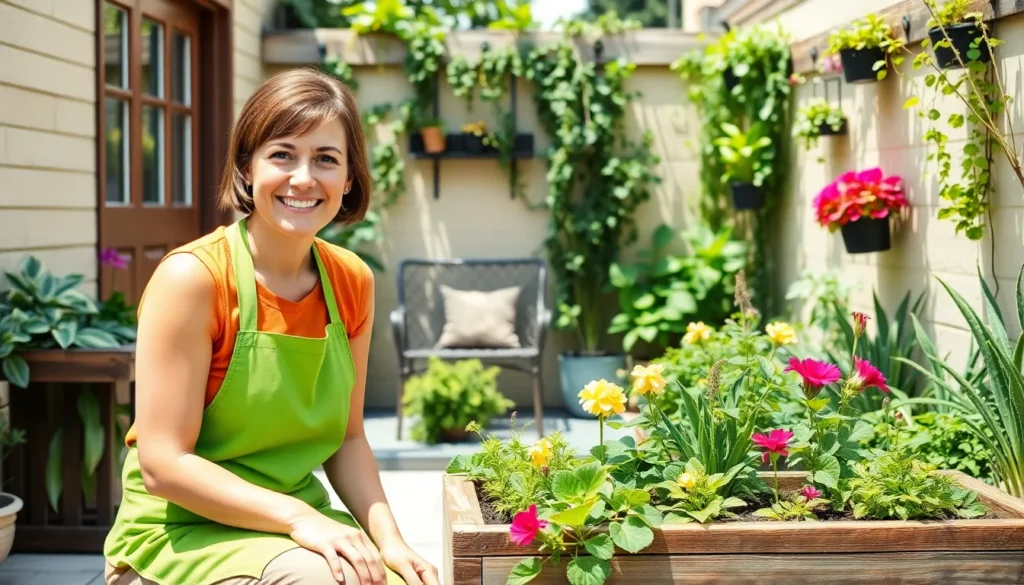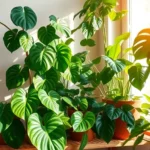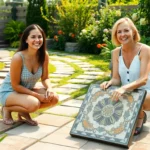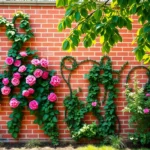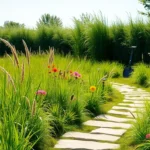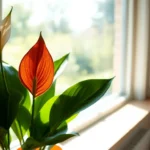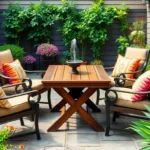Small spaces don’t have to mean small dreams when it comes to creating your perfect garden oasis. We’ve all felt that familiar frustration of staring at a tiny backyard, cramped patio, or narrow balcony and wondering how we’ll ever transform it into the lush sanctuary we’ve been dreaming about.
The good news? Limited square footage actually sparks unlimited creativity. We’ve discovered that small gardens often become the most charming and functional outdoor spaces because every inch counts and every design choice matters. From vertical growing systems that maximize your walls to clever container arrangements that create stunning focal points, there’s a industry of possibilities waiting to unfold.
Whether you’re working with a postage-stamp backyard, a cozy courtyard, or just a few containers on your balcony, we’ll show you how to maximize every square inch while creating a space that’s both beautiful and practical. Let’s turn your small garden challenges into your biggest gardening victories.
Maximize Vertical Space With Climbing Plants and Trellises
Vertical gardening transforms walls and fences into productive growing surfaces that multiply our planting capacity without expanding the footprint. We can achieve stunning results by training climbing vegetables like beans, peas, and cucumbers up sturdy trellises while incorporating flowering vines such as morning glories or clematis for added beauty.
Install Wall-Mounted Planters and Living Walls
Wall-mounted planters create dramatic displays that bring life to bare exterior walls and fence surfaces. We recommend selecting lightweight containers made from materials like fiberglass or resin that won’t strain mounting hardware over time. Pocket planters and modular systems work exceptionally well for herbs, succulents, and trailing plants like pothos or ivy.
Living walls offer the ultimate space-saving solution by covering entire vertical surfaces with lush vegetation. These systems typically feature built-in irrigation and drainage components that make maintenance straightforward. We’ve found that living walls work best with shallow-rooted plants such as ferns, moss, and small perennials that thrive in vertical growing conditions.
Mounting considerations become crucial for both safety and plant health in vertical installations. Choose wall anchors rated for at least three times the expected weight of fully watered planters. Position installations where they’ll receive appropriate light levels based on your selected plants’ requirements.
Create Tiered Garden Beds Using Retaining Walls
Tiered garden beds maximize growing space by creating multiple planting levels that follow natural slopes or artificial grade changes. We can construct these systems using materials like natural stone, concrete blocks, or treated lumber that complement our overall garden design. Each tier typically measures 12 to 18 inches in height to provide adequate soil depth for most plants.
Retaining walls serve dual purposes by preventing soil erosion while creating distinct planting zones for different crops or design themes. We recommend installing proper drainage behind walls using gravel and perforated pipes to prevent water buildup that could damage the structure. Terraced beds work particularly well for vegetables, herbs, and flowers that benefit from improved drainage and air circulation.
Design flexibility allows us to customize tier widths and heights based on our exact space constraints and plant selections. Narrow upper tiers work well for herbs and small flowering plants, while lower levels can accommodate larger vegetables or shrubs that need more root space.
Use Pergolas and Arbors for Overhead Growing
Pergolas and arbors create valuable overhead growing space that supports heavy climbing plants while providing partial shade for areas below. We can train grape vines, hardy kiwi, or passion fruit across these structures to produce edible crops that would otherwise require important ground space. These installations also support annual vines like gourds, hops, or flowering climbers that add seasonal interest.
Structural requirements for overhead growing differ significantly from wall-mounted systems due to increased weight loads and wind exposure. We recommend using posts anchored at least 2 feet deep in concrete footings with cross-bracing for stability. Spacing support beams 16 to 24 inches apart provides adequate support for most climbing plants while allowing good air circulation.
Maintenance access becomes important when planning overhead growing systems since pruning and harvesting require safe ladder placement or permanent platforms. Installing these structures near existing hardscape elements like patios or decks makes routine care more convenient and enjoyable throughout the growing season.
Choose Compact and Dwarf Plant Varieties
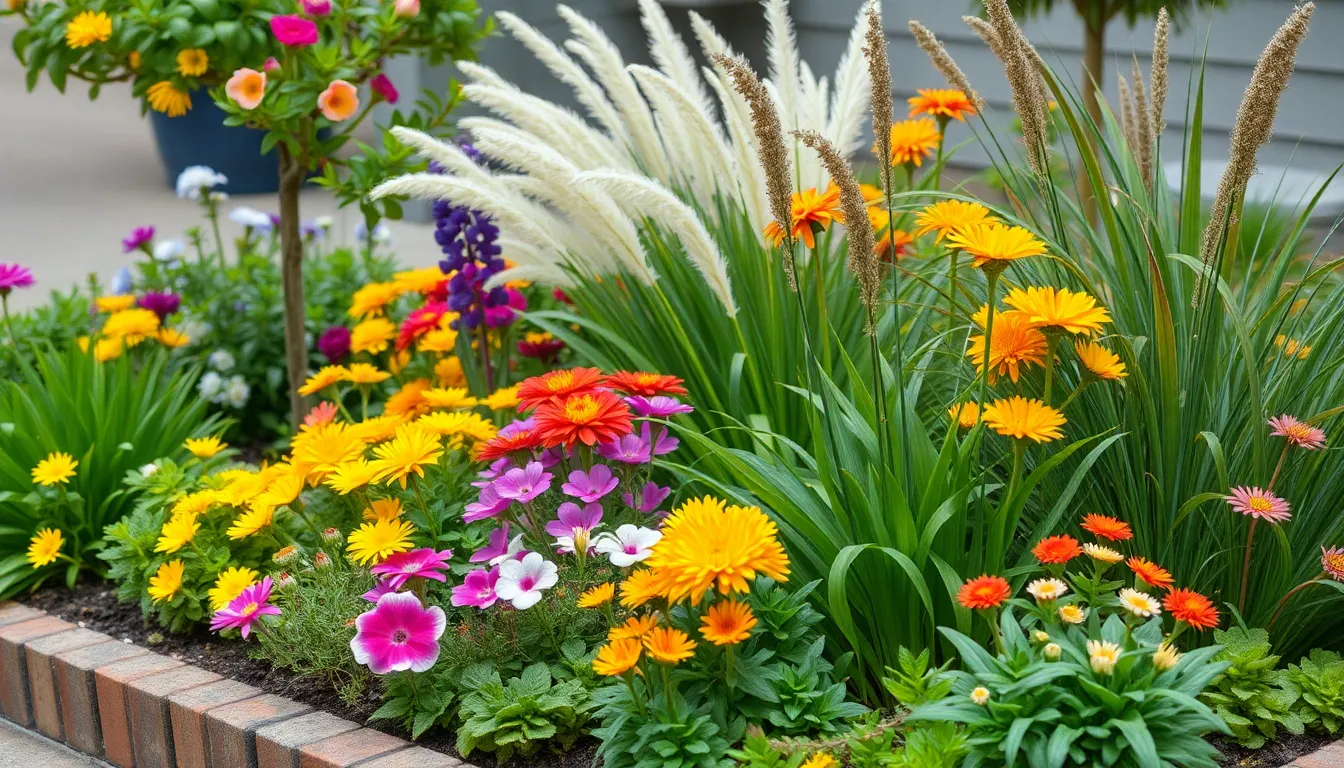
Plant selection becomes crucial when working with limited garden space. We can maximize both productivity and visual appeal by choosing varieties specifically bred for smaller areas.
Select Miniature Fruit Trees and Shrubs
Miniature fruit trees transform small gardens into productive spaces without overwhelming the area. Columnar apples grow vertically and require minimal ground space while producing full-sized fruit. Dwarf citrus trees like Meyer lemons or key limes thrive in containers and provide fresh fruit year-round in suitable climates.
Mini shrubs offer structure and ornamental value without dominating the industry. Boxwood (Buxus sempervirens) creates elegant borders and hedges in compact forms. Coral bark Japanese maple (Acer palmatum ‘Sango Kaku’) provides stunning seasonal color with its distinctive red stems and delicate foliage. These varieties deliver the same visual impact as their full-sized counterparts while fitting perfectly in small garden spaces.
Opt for Bush Varieties Instead of Vining Plants
Bush varieties provide better control over garden layout and prevent overgrowth in confined areas. Compact hydrangeas create beautiful focal points without the sprawling nature of climbing plants. Shrub roses offer continuous blooms throughout the growing season while maintaining a manageable size and tidy appearance.
Vining plants like clematis require extensive support systems and can quickly overtake small spaces. Bush alternatives eliminate the need for complex trellises and reduce maintenance requirements. We can achieve the same visual impact with controlled growth patterns that fit our space limitations perfectly.
Incorporate Dwarf Perennials and Ornamental Grasses
Dwarf perennials create lasting color and texture without requiring annual replanting. Dwarf daylilies (Hemerocallis spp.) bloom repeatedly throughout summer in compact clumps. Miniature bearded iris (Iris spp.) add spring color with their distinctive flowers and sword-like foliage. Compact hostas provide lush greenery and interesting leaf patterns for shaded areas.
Ornamental grasses add movement and contrast to small garden designs. Blue fescue (Festuca glauca) forms neat mounds of silvery-blue foliage that complement other plantings. These grasses create visual layers and textural interest while staying within manageable size limits. We can use them as accent plants or ground covers to tie different garden elements together seamlessly.
Design Multi-Functional Garden Elements
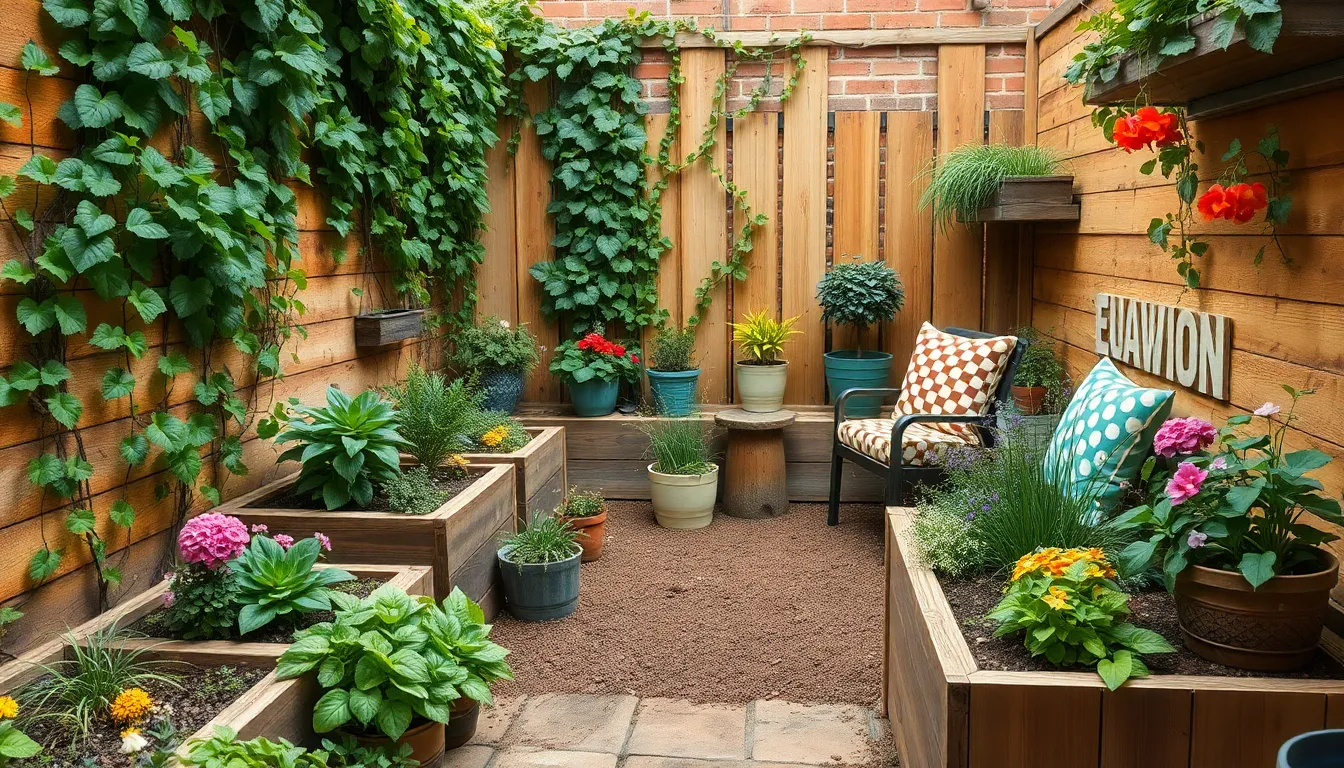
Smart garden design transforms every element into a dual-purpose solution that maximizes both space and functionality. These strategic additions help us create beautiful gardens that work harder for our limited square footage.
Build Raised Beds With Built-In Seating
Raised garden beds with integrated seating combine planting space with comfortable relaxation areas. We can construct these beds at the perfect height for both gardening and sitting, typically 18-24 inches high.
Stone or wooden borders work best for creating sturdy seating surfaces around the perimeter. Repurposed materials like old pallets or wooden planks offer budget-friendly options for building these dual-purpose structures. The seating areas provide convenient spots for weeding, harvesting, or simply enjoying our garden sanctuary.
These beds improve soil drainage while reducing the need for additional outdoor furniture. We’ll find ourselves spending more time in our gardens when comfortable seating is always within reach.
Install Planters That Double as Privacy Screens
Tiered planters filled with dense foliage create natural privacy screens along garden boundaries. These vertical answers block unwanted views while adding valuable growing space to our compact areas.
Climbing vines like ivy or clematis thrive on trellises integrated into these planter systems. We can position these privacy planters strategically to create intimate garden rooms or hide unsightly views from neighboring properties.
The height variation in tiered designs adds visual interest while maximizing our planting capacity. These screens work particularly well along fence lines or property edges where we need both privacy and growing space.
Create Storage Answers That Also Serve as Plant Stands
Multifunctional plant stands with built-in storage keep gardening tools organized while displaying our favorite plants. We can design these stands with hidden compartments for storing seeds, gloves, and small hand tools.
Benches with lift-up seats provide seating while concealing storage space underneath. These dual-purpose pieces work especially well near garden entrances where we need quick access to frequently used items.
Wooden plant stands with shelving below offer multiple levels for displaying plants while storing larger tools like watering cans. The organized storage keeps our small garden spaces tidy and functional.
Implement Container Gardening Strategies
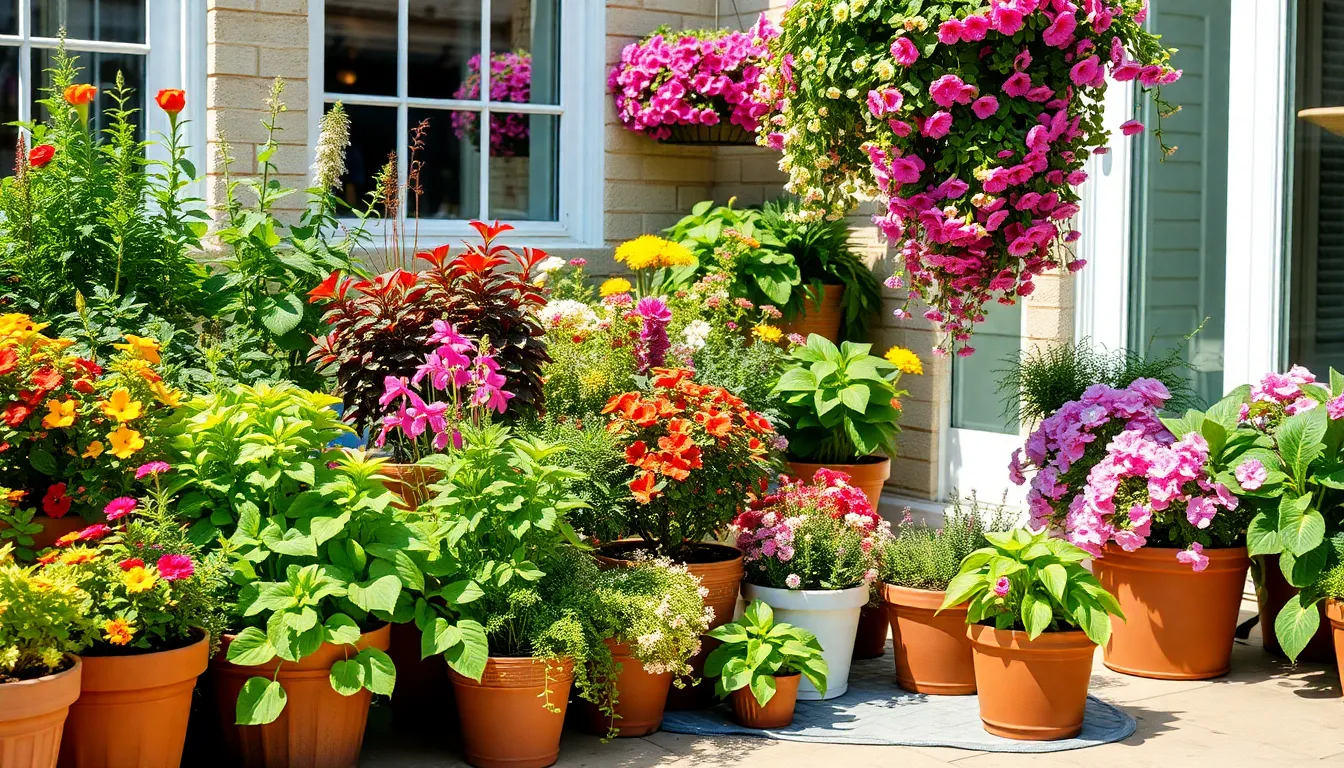
Container gardening transforms even the smallest spaces into thriving green havens. We’ve found that this flexible approach works perfectly for patios, balconies, and tiny yards where traditional planting isn’t possible.
Use Hanging Baskets to Save Floor Space
Hanging baskets maximize our vertical growing potential without sacrificing precious floor space. We can grow herbs like basil, thyme, and mint in suspended containers while keeping walkways clear and accessible. These elevated planters work exceptionally well for trailing flowers and cascading vegetables that naturally spill over container edges.
Strategic placement near windows or overhead structures provides easy access for watering and harvesting. We recommend selecting lightweight containers with built-in drainage systems to prevent water damage and ensure healthy root development.
Arrange Pots in Clusters for Visual Impact
Grouping containers creates stunning focal points that make small gardens appear fuller and more established. We achieve maximum visual impact by combining different sized pots with varying plant heights and textures. Clustering three to five containers of different dimensions prevents scattered, sparse appearances.
Odd numbered groupings naturally create more ever-changing visual arrangements than even numbers. We position taller plants like cherry tomatoes in back containers while shorter herbs and lettuce occupy front positions for easy maintenance access.
Choose Mobile Containers for Seasonal Flexibility
Mobile containers give us complete control over our plants’ growing conditions throughout changing seasons. We use wheeled planters and lightweight pots to relocate sun-loving plants during different times of year. This flexibility proves especially valuable for container trees like lemons and olives that need protection during harsh weather.
Rolling containers indoors during winter months extends growing seasons significantly. We select containers with sturdy wheels or invest in plant caddies that support heavier pots while maintaining easy mobility across different surfaces.
Create Zones and Define Separate Garden Areas
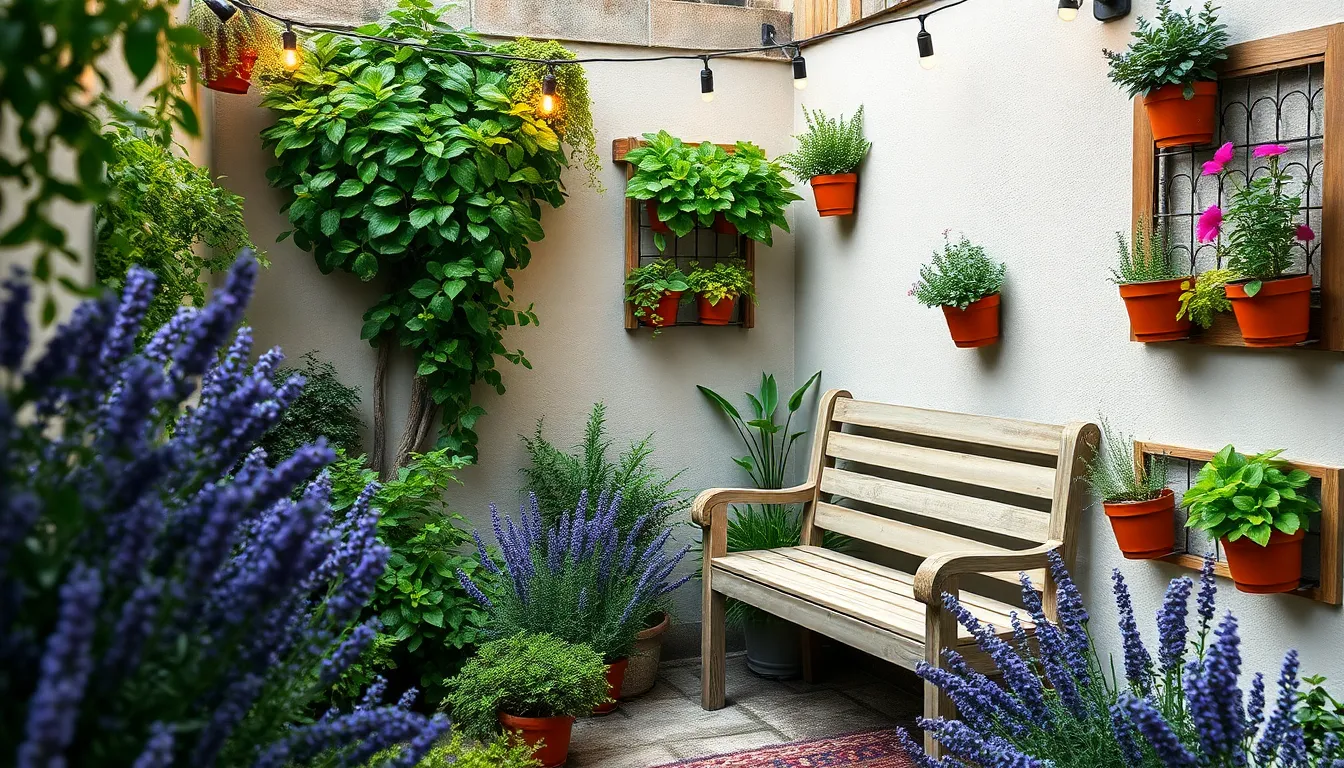
Dividing your compact outdoor space into distinct functional areas can make it feel significantly larger and more organized. Strategic zoning transforms a single small plot into multiple purposeful garden rooms that serve different needs.
Establish a Dedicated Herb Garden Corner
Corner spaces offer perfect opportunities for creating focused herb growing areas that maximize both productivity and accessibility. We recommend utilizing vertical planters mounted on walls or installing trellises to accommodate climbing herbs like basil and rosemary without consuming valuable ground space.
Compact herb varieties work exceptionally well in these designated corners since they require minimal space while providing maximum culinary value. Choose dwarf varieties of popular herbs such as miniature oregano, compact thyme, and bush basil to maintain proportional garden design. Wall mounted containers and hanging planters allow us to create layered herb displays that use every inch of vertical surface area.
Position your herb corner near kitchen windows or entrance doors for convenient daily harvesting. This strategic placement makes cooking with fresh herbs more practical while keeping frequently used plants within easy reach.
Design a Cozy Seating Area Surrounded by Plants
Creating intimate seating spaces transforms functional gardens into relaxing outdoor retreats that invite daily enjoyment. Corner bench placement maximizes available space while providing comfortable spots for morning coffee or evening relaxation surrounded by greenery.
Enclosing plants like lavender and boxwood create natural privacy screens around seating areas without requiring permanent structures. These fragrant barriers add sensory appeal while defining the space and blocking unwanted views from neighboring properties.
Small bistro sets or built in benches work particularly well in compact gardens since they provide necessary functionality without overwhelming the space. We suggest incorporating cushions and throws in weather resistant fabrics to enhance comfort and extend outdoor living seasons.
Strategic lighting around seating areas extends usability into evening hours while highlighting surrounding plantings. Solar powered string lights or small lanterns create ambiance without requiring electrical installations.
Separate Vegetable Growing From Ornamental Spaces
Maintaining distinct areas for food production and decorative plantings improves both garden aesthetics and growing success rates. Raised beds work exceptionally well for vegetable cultivation since they provide better soil drainage and easier maintenance access compared to ground level plantings.
Container gardens offer flexibility for ornamental displays while keeping decorative plants visually separate from productive growing areas. This separation allows us to optimize growing conditions for each plant type without compromising overall garden appearance.
Elevated vegetable planters create clear visual boundaries while improving ergonomics for daily garden maintenance tasks. These structures also provide better pest control and soil quality management compared to mixed planting schemes.
Pathways between zones help define separate areas while providing practical access for maintenance and harvesting activities. Gravel or stone pathways guide visitors through different garden sections while preventing soil compaction around growing plants.
Incorporate Space-Saving Garden Structures
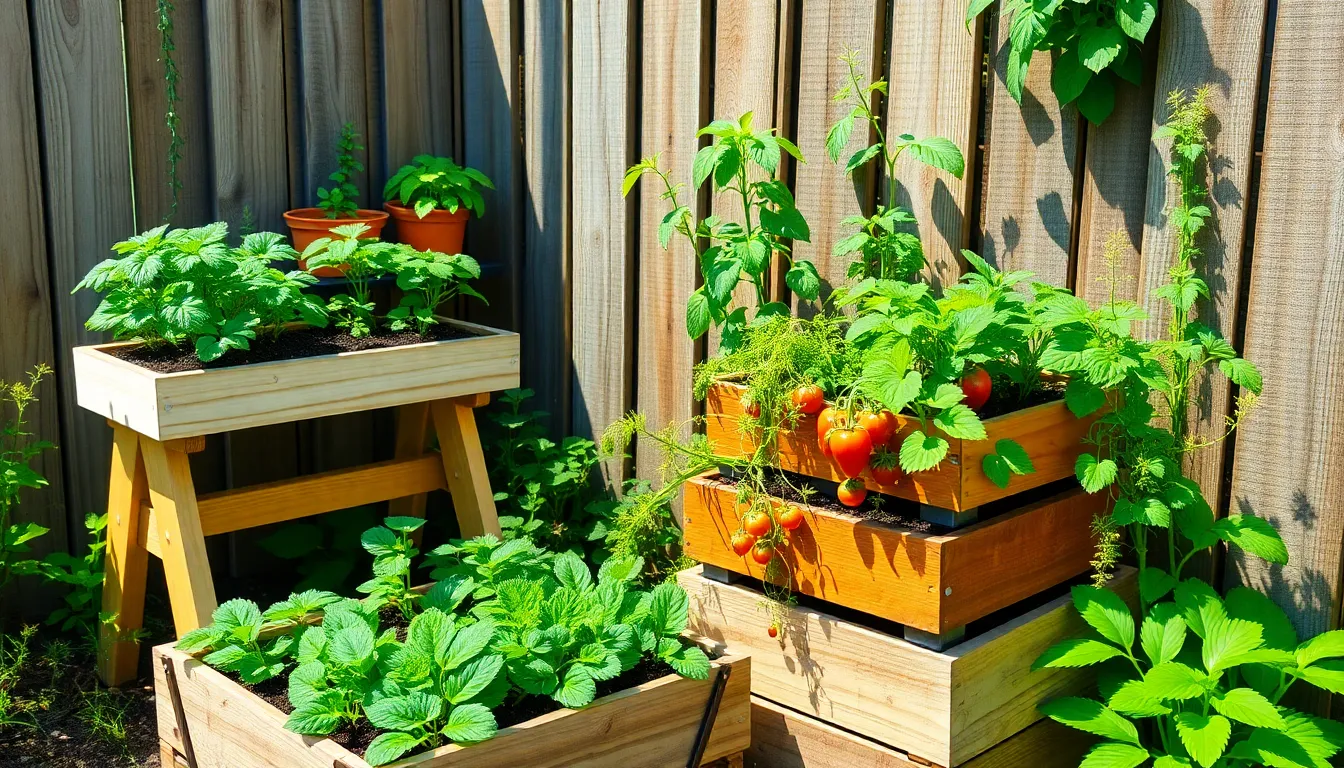
Smart structural answers transform cramped gardening areas into efficient growing spaces that maximize every square foot. These innovative approaches help us organize our plants while creating functional workspaces that fold away when we’re not using them.
Build Square Foot Garden Grids for Organized Growing
Square foot garden grids revolutionize how we approach small-space gardening by dividing growing areas into manageable sections. Each grid section accommodates different plant types, from leafy greens like lettuce and spinach to compact herbs such as basil and parsley. Construction involves creating wooden frames with interior dividers that form individual planting squares, typically measuring 12 inches by 12 inches each.
These grids eliminate guesswork in plant spacing while preventing overcrowding that often plagues traditional small gardens. We can dedicate exact squares to quick-growing crops like radishes and arugula, while reserving other sections for slower-developing plants such as peppers and tomatoes. The organized layout makes maintenance tasks like watering and harvesting significantly easier since we can target exact sections without disturbing neighboring plants.
Install Fold-Down Potting Benches and Work Surfaces
Fold-down potting benches provide essential workspace without permanently consuming valuable floor space in our small gardens. Wall-mounted designs attach securely to fences, shed walls, or house exteriors, creating temporary work surfaces that disappear when we fold them against the wall. These benches typically measure 24 to 36 inches wide, offering sufficient space for potting activities, tool storage, and plant preparation tasks.
Installation requires sturdy wall anchors and heavy-duty hinges that support the bench’s weight plus any materials we place on top. Many designs include built-in storage compartments for frequently used items like hand tools, plant labels, and small containers. The convenience factor makes these benches particularly valuable during busy planting seasons when we need quick access to workspace without setting up traditional tables.
Use Stackable Planters and Modular Growing Systems
Stackable planters create tiered gardens that multiply our growing capacity without expanding our garden’s footprint. These modular systems typically feature interlocking components that allow us to build upward, creating multiple planting levels from a single base location. Popular materials include lightweight plastic, cedar wood, and powder-coated metal that withstand outdoor conditions while remaining easy to rearrange.
Modular growing systems offer incredible flexibility since we can reconfigure layouts seasonally or as our gardening needs change. Tower planters work exceptionally well for herbs, strawberries, and trailing plants like cherry tomatoes that cascade naturally over the edges. The tiered design improves drainage and air circulation around plants while making harvesting more comfortable since we don’t need to bend down to ground level for every plant.
These systems prove particularly effective for succession planting, where we can start new crops in upper tiers while harvesting mature plants from lower levels. The modular approach also allows us to experiment with different arrangements until we find configurations that work best for our exact space and growing goals.
Select Plants That Serve Multiple Purposes
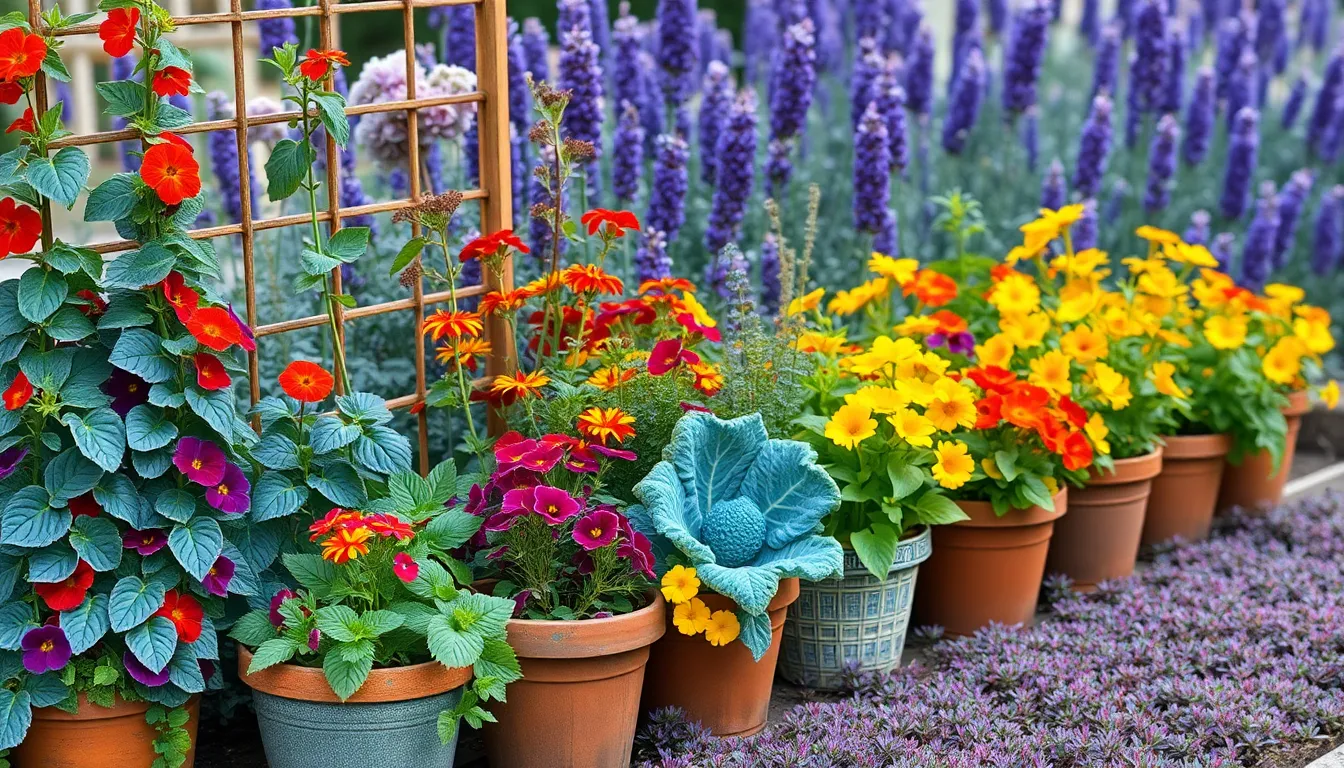
We’ve found that selecting plants with multiple functions transforms small gardens into efficient, beautiful spaces. Smart plant choices deliver visual impact while providing practical benefits like food production, wildlife support, and reduced maintenance needs.
Grow Edible Flowers and Ornamental Vegetables
Nasturtiums bring vibrant orange and yellow blooms to our gardens while producing peppery leaves and flowers perfect for salads. We love incorporating these climbing beauties into vertical displays where they cascade from hanging baskets or climb trellises with stunning visual effect. Pansies offer delicate purple, yellow, and white faces that brighten container arrangements and taste mildly sweet in desserts and garnishes.
Rainbow chard creates stunning focal points with its colorful stems ranging from bright red to golden yellow, while producing nutritious greens for our kitchen. We plant these ornamental vegetables in prominent positions where their architectural leaves can shine as garden centerpieces. Purple basil adds deep burgundy foliage to herb collections and produces aromatic leaves for cooking, making it perfect for edible industry borders.
Decorative kale varieties like ‘Redbor’ and ‘Winterbor’ provide textural interest with their frilly, colorful leaves that intensify in cool weather. We use these hardy vegetables as seasonal focal points in fall and winter container displays. Runner beans climb vertically on trellises while producing abundant harvests and attractive red or white flowers that hummingbirds adore.
Choose Fragrant Plants That Also Attract Pollinators
Lavender releases its signature scent throughout our gardens while attracting bees and butterflies with its purple flower spikes. We position these drought-tolerant perennials along pathways where their fragrance can be enjoyed with every passing. English lavender varieties like ‘Hidcote’ and ‘Munstead’ work perfectly in small spaces, reaching only 12-18 inches tall.
Rosemary provides year-round structure with its needle-like evergreen foliage and produces small blue flowers that pollinators visit eagerly. We grow this versatile herb in containers that can move indoors during harsh winters, ensuring fresh herbs for cooking year-round. Prostrate varieties like ‘Prostratus’ work beautifully cascading from raised beds or retaining walls.
Bee balm creates spectacular summer displays with its tubular flowers in shades of red, pink, or purple that attract hummingbirds and native bees. We plant these native perennials in slightly moist spots where they can spread naturally to fill space. Monarda varieties like ‘Jacob Cline’ resist powdery mildew better than older cultivars.
Salvia species offer incredible diversity with varieties ranging from annual bedding plants to hardy perennials, all producing nectar-rich flowers beloved by pollinators. We choose compact varieties like ‘May Night’ perennial salvia for consistent purple blooms that complement other garden colors. Annual salvias provide continuous color from spring through frost in containers and borders.
Plant Ground Covers That Suppress Weeds and Provide Color
Creeping thyme forms dense mats of tiny aromatic leaves topped with pink or white flowers that release fragrance when walked upon. We plant this hardy ground cover between stepping stones and in areas where foot traffic creates natural pathways. Thymus serpyllum varieties tolerate drought conditions and poor soils while providing continuous weed suppression.
Sedum varieties create succulent carpets that require minimal water while producing colorful foliage and seasonal flower displays. We use low-growing types like ‘Dragon’s Blood’ sedum for its red-tinged leaves and pink flowers that attract butterflies. These drought-tolerant plants thrive in poor soils where other ground covers struggle.
Ajuga spreads quickly with its glossy leaves and spring spikes of blue, purple, or white flowers that create stunning seasonal displays. We plant these shade-tolerant ground covers under trees and in areas where grass struggles to grow. Bronze-leafed varieties like ‘Bronze Beauty’ provide year-round color contrast in shaded garden beds.
Wild ginger creates lush carpets of heart-shaped leaves in shaded areas while producing hidden flowers near ground level. We use this native ground cover in woodland garden settings where its spreading habit naturally suppresses weeds. Asarum canadense tolerates deep shade and provides consistent green coverage throughout the growing season.
Use Light Colors and Mirrors to Create Illusion of Space
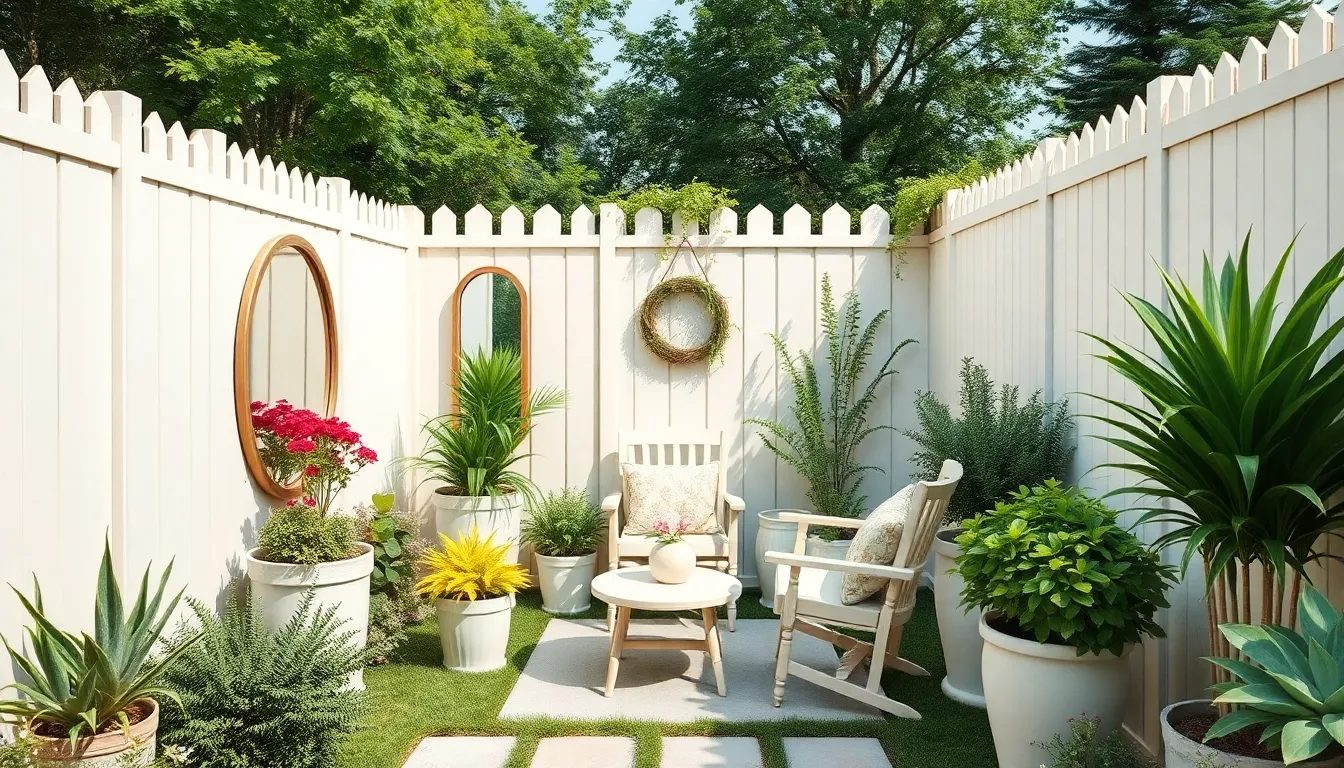
Visual tricks can transform cramped outdoor areas into seemingly spacious retreats. We’ll explore how strategic color choices and reflective surfaces maximize perceived space in our small gardens.
Paint Fences and Walls in Light, Reflective Colors
Light colored surfaces maximize the amount of light our gardens receive, creating an immediate sense of openness. White, cream, and pale yellow paint reflect sunlight back into planting areas, making boundaries appear to recede rather than close in on us. We recommend choosing semi-gloss or satin finishes that bounce light more effectively than flat paints.
Neutral tones like soft gray or beige work particularly well when we want to highlight colorful plantings without creating harsh contrasts. These reflective surfaces help our gardens feel brighter throughout the day, especially in shaded corners where darker colors would absorb precious light. Professional landscapers often use this technique to double the visual impact of available natural light.
Position Mirrors Strategically to Reflect Garden Views
Mirrors create powerful illusions of expanded space by reflecting existing garden elements back into our sight lines. We position weatherproof garden mirrors on walls or fences opposite our most attractive plantings to effectively double the visual garden area. Strategic placement near pathways or seating areas gives us glimpses of greenery from multiple angles.
Outdoor mirrors work best when angled slightly downward to capture ground level plantings rather than sky reflections. We avoid placing mirrors where they might create glare or confuse visiting wildlife, focusing instead on spots that reflect our prettiest garden corners. Framed mirrors designed for exterior use withstand weather while adding architectural interest to plain fence surfaces.
Choose Light Colored Containers and Garden Furniture
Light colored containers enhance the reflective effect throughout our garden spaces while keeping plant roots cooler in summer heat. White, cream, and pale terra cotta planters appear to take up less visual space than dark alternatives, allowing our plants to become the focal points. We select furniture in similar light tones to maintain visual cohesion.
Lightweight colored metals like aluminum or painted steel work exceptionally well for both planters and seating because they reflect surrounding colors. These materials also move easily when we need to rearrange our layouts seasonally. Pale wooden furniture treated with light stains contributes warmth while maintaining the space expanding effect we’re trying to achieve.
Conclusion
Small gardens don’t have to mean small dreams. With the right strategies and creative thinking we can transform any compact outdoor space into a thriving green sanctuary that rivals larger gardens in both beauty and functionality.
The key lies in maximizing every square inch through vertical growing systems smart container arrangements and multi-functional design elements. When we combine space-saving techniques with carefully selected plants and visual tricks our small gardens become efficient productive spaces that feel surprisingly spacious.
Remember that limitations often spark the most innovative answers. By embracing these garden ideas we’re not just working around space constraints – we’re creating unique outdoor retreats that reflect our personal style while providing fresh herbs vegetables and beautiful blooms right outside our door.
Frequently Asked Questions
What are the best vertical gardening techniques for small spaces?
Use climbing plants with trellises, install wall-mounted planters, and create living walls to maximize vertical surfaces. Build tiered garden beds with retaining walls for multiple planting levels, and consider pergolas or arbors for overhead growing space. These methods increase planting capacity without expanding your garden’s footprint.
Which plants work best in small gardens?
Choose compact and dwarf varieties like miniature fruit trees, bush-type plants instead of vining varieties, and dwarf perennials. Columnar apples, dwarf citrus trees, compact hydrangeas, and shrub roses are excellent choices. These plants provide maximum impact while fitting perfectly in limited spaces.
How can I make my garden furniture serve multiple purposes?
Build raised beds with integrated seating to combine planting and relaxation areas. Use tiered planters as privacy screens, and choose storage benches with hidden compartments for tools. Plant stands with storage and fold-down potting benches maximize functionality without consuming permanent floor space.
What container gardening strategies work for tiny spaces?
Use hanging baskets to save floor space, arrange pots in odd-numbered clusters for visual impact, and choose mobile containers for seasonal flexibility. Select lightweight pots with proper drainage, and position containers strategically for easy access while keeping walkways clear.
How do I create separate zones in a small garden?
Establish dedicated areas like herb corners using vertical planters, design cozy seating areas surrounded by plants, and separate vegetable growing from ornamental spaces. Use pathways to define zones and facilitate access, creating organization and enhanced functionality in limited space.
What visual tricks make small gardens appear larger?
Paint fences and walls in light, reflective colors to maximize brightness and openness. Use mirrors strategically to reflect garden views and create depth illusion. Choose light-colored containers and furniture that reflect surrounding colors, maintaining a cohesive and spacious feel throughout your garden.
Which plants serve multiple purposes in small gardens?
Grow edible flowers like nasturtiums, ornamental vegetables such as rainbow chard, and fragrant plants like lavender that attract pollinators. Use ground covers like creeping thyme and sedum that suppress weeds while adding color, maximizing both beauty and functionality in every plant choice.

